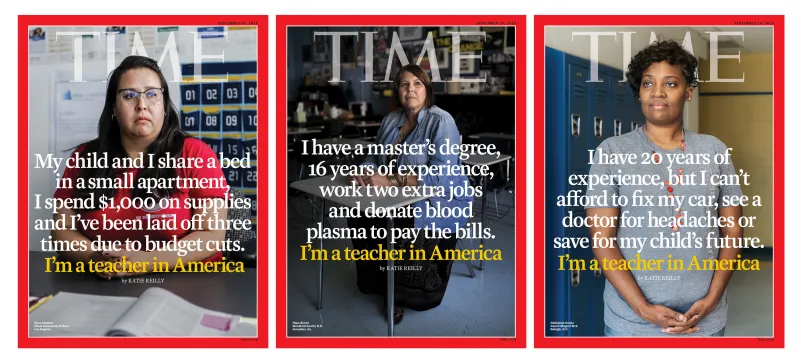7 Mistakes You're Making with Girls STEM Education Post-COVID (and How to Fix Them)
- Robyn Donaldson
- Oct 15
- 5 min read
Listen, we need to talk. I've been watching what's happening in STEM education since we all came back from the COVID chaos, and honestly? I'm worried sick. The progress we fought so hard to make with girls in STEM has gone into complete reverse.
Remember how proud we felt in 2019 when the gender gap was practically closed? Yeah, well, that's ancient history now. Girls have lost all the ground they gained in math over the past decade, while boys bounced back faster than a rubber ball. We're basically back to square one, and frankly, some of the mistakes I'm seeing in classrooms are making me want to shake people by the shoulders.
But here's the thing – and this is why I'm writing to you today – these aren't unfixable problems. We know what works because it worked before. We just need to stop making these seven critical mistakes that are crushing our girls' STEM dreams.
Mistake 1: Falling Back on "Drill and Kill" Teaching Methods
You know what happened when the pandemic hit? Teachers panicked (understandably) and went straight back to the old playbook: rote memorization, speed drills, and competitive math races. Sound familiar? It should, because these are exactly the methods that created the gender gap in the first place.
During COVID, all those research-backed teaching practices we'd worked so hard to implement just... disappeared. Teachers told researchers they had to "go back to what we knew" when everything fell apart. The problem is, what we "knew" was biased against how girls typically learn best.
The Fix: Get back to problem-solving flexibility and conceptual understanding. Girls thrive when they can work through problems in multiple ways rather than racing to memorize formulas. This isn't about dumbing things down – it's about teaching smarter. When we emphasize understanding over speed, both boys and girls perform better, but girls especially shine.

Mistake 2: Abandoning Girl-Focused STEM Programs (And Not Bringing Them Back)
This one makes my blood boil. All those after-school robotics clubs, coding camps, and hands-on STEM programs that were specifically designed to boost girls' confidence? They were the first to go when schools pivoted online, and guess what? Most of them still haven't come back.
These programs weren't just nice-to-haves – they were lifelines. They gave girls safe spaces to experiment, fail, and try again without the pressure of boys dominating every conversation.
The Fix: Make restarting these programs your top priority. Not next semester, not next year – now. Create spaces where girls can connect abstract STEM concepts to real-life problems they actually care about. Because here's what we know: girls are more likely to stick with STEM when they see how it can solve real-world problems.
Mistake 3: Ignoring the Mental Health Tsunami That Hit Girls Harder
Let's be brutally honest here. The pandemic didn't affect everyone equally, and girls got hit with a double whammy of anxiety and depression that we're still not adequately addressing. Girls reported significantly higher levels of mental health challenges than boys, and yet most schools are treating academic recovery like it's separate from emotional recovery.
It's not. You can't learn calculus when you're drowning in anxiety, and you can't engage with chemistry when depression has convinced you that you're "just not a science person."
The Fix: Integrate social-emotional learning into your STEM curricula. Train your counselors to understand the specific connection between mental health and STEM performance for girls. And please, for the love of all that's holy, stop treating emotional support like it's a luxury. It's essential infrastructure for learning.

Mistake 4: Letting Boys Dominate the Conversation Again
Here's something that'll make you grind your teeth: all those carefully balanced classroom dynamics we worked so hard to create? They've gone out the window. In classes with heavy male enrollment, boys are once again monopolizing discussions, and girls are quietly fading into the background.
We had made real progress on this before COVID. Teachers were learning to recognize and interrupt these patterns. But now? It's like we hit the reset button on the worst parts of STEM education.
The Fix: Actively work to balance your class compositions by gender where possible, and when you can't, implement structured discussion formats that guarantee equal participation. Train your teachers to spot when boys are taking over and give them concrete strategies to redirect. This isn't about silencing anyone – it's about making sure everyone's voice gets heard.
Mistake 5: Teaching STEM in a Vacuum
Remember when we figured out that girls are more engaged by STEM learning that connects to real-world applications? That "sense-making" approach that was showing such promise? Yeah, that was apparently the first thing teachers threw overboard when they switched to emergency remote learning.
Instead of showing girls how physics explains why their favorite roller coaster works, or how chemistry could help solve climate change, we went back to abstract formulas floating in space. No wonder girls checked out.
The Fix: Rebuild your curricula around project-based learning that explicitly connects STEM concepts to problems girls actually care about. Show them how the math they're learning today could help them design sustainable cities tomorrow. Make it real, make it relevant, make it matter.

Mistake 6: Skipping Professional Development on Gender Equity
Here's a harsh truth: we lost a lot of teachers during the pandemic, and the new ones coming in haven't been trained in gender-equitable teaching practices. Even experienced teachers who stayed are dealing with so much chaos that their unconscious biases are creeping back in.
Without proper training, teachers unconsciously call on boys more often, accept shouted-out answers from boys while expecting girls to raise their hands, and give more detailed feedback to male students. They're not doing it on purpose, but the impact is devastating.
The Fix: Make ongoing professional development in inclusive teaching practices non-negotiable. Not a one-and-done workshop, but systematic, ongoing training that helps teachers recognize subtle biases and gives them concrete tools to create equitable classrooms. Every teacher touching STEM subjects needs this training, period.
Mistake 7: Flying Blind Without Data
This is the mistake that keeps me up at night: most schools aren't even tracking whether their girls are falling behind in STEM, let alone doing anything systematic to address it. We have clear evidence that the gender gap has reopened, but we're not monitoring it at the classroom level or implementing targeted interventions.
We're essentially crossing our fingers and hoping the problem will magically solve itself. Spoiler alert: it won't.
The Fix: Implement regular monitoring systems to track gender gaps in STEM achievement. Use that data to inform targeted interventions. Allocate resources specifically toward closing these gaps. And please, measure progress regularly so you know what's working and what isn't.

We Can't Afford to Get This Wrong
Look, I know this feels overwhelming. The pandemic disrupted everything, and just when we thought we were making progress, we got knocked back to the stone age. But here's what gives me hope: we know what works because it worked before.
The research is crystal clear. When society gets disrupted, we fall back into bad patterns – but that also means we can choose to build back better. We can use this moment as an opportunity to create STEM education that's more equitable than it was before the pandemic.
But only if we stop making these seven critical mistakes. Our girls are counting on us to get this right. They've already lost three years of progress – we can't afford to lose any more time.
The question isn't whether we can close the STEM gender gap again. We know we can because we did it before. The question is whether we have the will to prioritize it and do the hard work necessary to make it happen.
What do you say? Are you ready to stop making these mistakes and start building the STEM education our girls deserve? Because they're watching, they're waiting, and they're ready to show the world what they can do – if we just give them the chance.
.png)




Comments